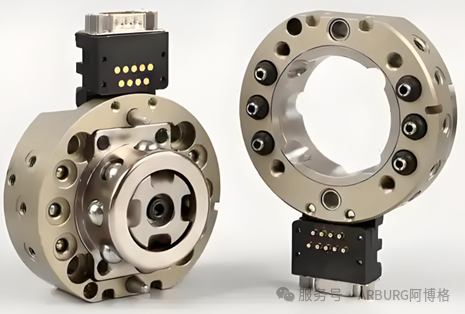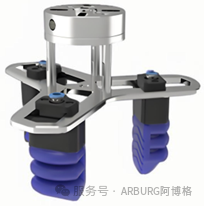A Key Step in Injection Molding Automation Upgrades: A Comprehensive Analysis of Intelligent Gripper Technology
With the deepening advancement of Industry 4.0, the injection molding industry is accelerating its transition towards intelligent and flexible production.Gripper (EOAT)As the "hand" at the end of the manipulator, its performance directly determines the efficiency and adaptability of the automation system. We will proceed from...Technical Principles, Application Advantages, Development TrendsFrom three aspects, systematically analyze the key role of modern intelligent grippers in injection molding automation.
Technical Principles:From Pneumatics to Intelligence: The Evolution of Grippers
1. Grippers can be classified into three types based on their driving methods.

2. From the perspective of clamping methods, the injection molding industry commonly uses the following four types:
Parallel gripperSuitable for regular workpieces
Diagonal claw clampSuitable for space-constrained scenarios.
Three-finger gripperAdapt to circular or irregular objects
Non-destructive gripping for flat or thin objects
Smart Gripper: Enabling Robotic Hands to "Feel and Think"
Compared to traditional grippers, intelligent grippers integrate sensors, vision systems, and AI algorithms, offering the following advantages:
Adaptive Grasping
Through real-time feedback from force/torque sensors, the gripper can automatically adjust the gripping force to prevent product deformation or damage.
High-precision positioning
With visual guidance, the repeat positioning accuracy can reach ±0.01mm, meeting the precision picking requirements for high-end injection molded parts.
Quick changeover
Modular design supports quick replacement of grippers, adapting to flexible production modes with small batches and multiple varieties.

Future Trends: Grippers Will Become Smarter and More Flexible
Stronger material adaptability
To address high temperatures in newly demolded products, it is necessary to develop new heat-resistant and wear-resistant contact materials to enhance the lifespan and stability of grippers.
More flexible structure, adaptable to more complex situations.
For complex workpieces such as irregular shapes and curved surfaces, flexible grippers or bionic structures will be increasingly adopted in the future to enhance grasping stability.
Higher level of intelligence
Currently, control relies heavily on preset rules. In the future, deep learning algorithms will be introduced to achieve autonomous recognition, path planning, and optimization of grasping strategies.

The intelligent gripper is not only the "hand" of injection molding automation, but also the "nerve ending" of smart manufacturing. With continuous technological evolution, grippers will become more intelligent, flexible, and efficient, serving as a key force driving the injection molding industry towards flexible manufacturing and smart factories.
【Copyright and Disclaimer】The above information is collected and organized by PlastMatch. The copyright belongs to the original author. This article is reprinted for the purpose of providing more information, and it does not imply that PlastMatch endorses the views expressed in the article or guarantees its accuracy. If there are any errors in the source attribution or if your legitimate rights have been infringed, please contact us, and we will promptly correct or remove the content. If other media, websites, or individuals use the aforementioned content, they must clearly indicate the original source and origin of the work and assume legal responsibility on their own.
Most Popular
-

EVA Morning Prices on September 12: Most of the Market Holds Steady, Highest Rise of 50 Yuan
-

[PET Weekly Outlook] Polyester Bottle Chips Expected to Oscillate and Warm Up with Costs Today
-

List Released! Mexico Announces 50% Tariff On 1,371 China Product Categories
-

EU Changes ELV Regulation Again: Recycled Plastic Content Dispute and Exclusion of Bio-Based Plastics
-

Case Study | Clariant AddWorks™ Additives Solve Plastic Yellowing Problem






